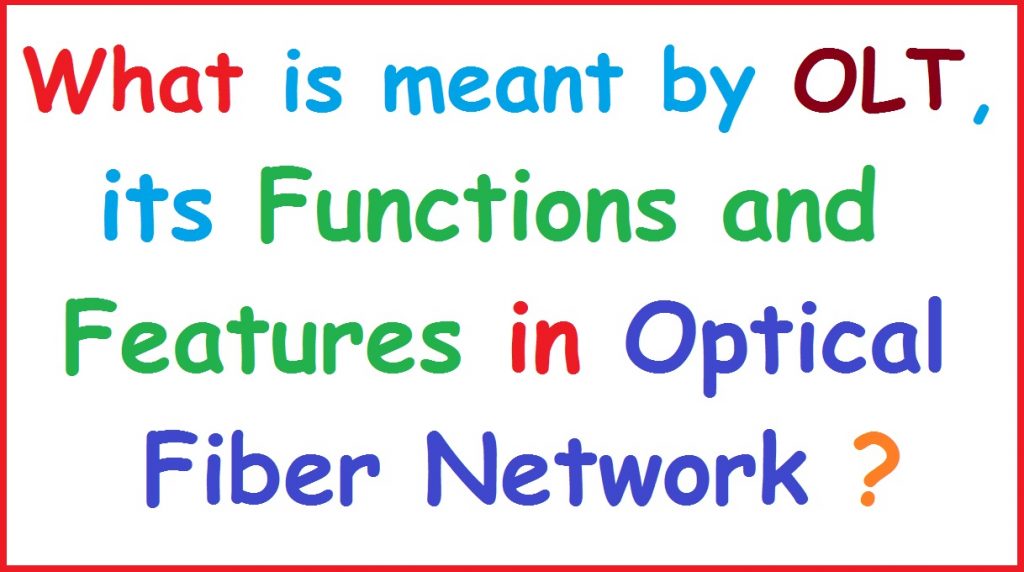What is Meant by OLT, its Functions and Features in Optical Fiber Network
About OLT (Optical Line Terminal): GPON (Gigabit Passive Optical Network) is equipment which is used in Optical Fiber network to provide maximum and highest data transmission speed with minimize of the network costing.
This GPON system generally consists of an optical Line Terminal at the service provider’s central office. This OLT plays an essential role in the performance of Optical Fiber Network and it is an indispencible components of PON.
In this we provide you the information about functions and features of OLT.
Functions of Optical Line Terminal (OLT)
Functions of OLT are as follows: Optical Line Terminal (OLT) is generally employed for the terminal connected to the fiber backbone. An OLT has two primary functions.
The two primary functions of OLT are as follows:
- By using the OLT, converting the standard signals use by a FIOS service providers to the frequency and framing used by the PON system.
- Coordinating the multiplexing between the conversion devices on the optical network terminals (OLT’s) located on the customer’s premises.
Features of Optical Line Terminal (OLT)
Features of optical line terminal: The OLT sends Ethernet data to the Optical Network Unit (ONU), initiates and controls the ranging process. It provides prominent features.
The below are the features of Optical Line Terminal.
1. A downstream frame processing means for receiving and churning an asynchronous transfer mode cell to generate a downstream frame, and converting a parallel data of the downstream frame into a serial data thereof.
2. A wavelength division multiplexing means for performing an electro/optical conversion of the serial data of the downstream frame and performing a wavelength division multiplexing and thereof.
3. An upstream frame processing means for extracting data from the wavelength division multiplexing means, searching an overhead filed, delineating a slot boundary.
4. And processing a physical layer operations administration and maintenance cell and a divided slot separately.
5. A control signal generation means for performing a Media Access Control (MAC) protocol and generating variables timing signals used for the downstream frame processing means and the upstream frame processing.
6. A control means for controlling the downstream frame processing mans and the upstream frame processing means by using the variables and the timing signals from the control signal generation means.
These are the few features of OLT.
